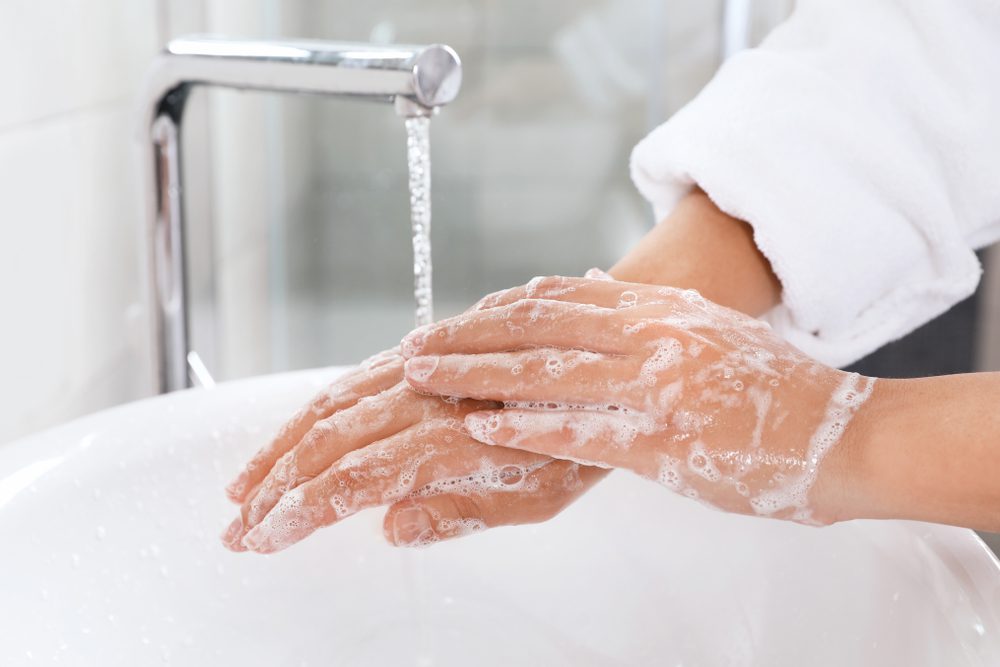Tested Methods for Addressing Low Water Pressure in Your Home
Tested Methods for Addressing Low Water Pressure in Your Home
Blog Article
What are your beliefs about Low Water Pressure in the House??

Low tide pressure in your house can be a frustrating issue, influencing every little thing from showering to cleaning recipes. If you're experiencing weak water circulation, there are numerous possible causes and solutions to explore. In this guide, we'll go over usual reasons for low water pressure and functional actions to address the problem effectively.
Intro to Low Tide Pressure
Low tide pressure occurs when the circulation of water from your faucets, showers, and other components is weak than normal. This can make everyday jobs much more tough and much less reliable. Understanding the causes of low water stress is vital to finding the ideal remedy.
Common Root Causes Of Low Water Stress
Pipe Obstructions
In time, pipelines can become blocked with natural resource, debris, or debris, restricting the flow of water. This is a common problem in older homes with galvanized steel pipelines.
Deterioration
Corrosion within pipes can cause leaks and minimized water pressure. Corrosion build-up can restrict water flow, specifically in aging plumbing systems.
Faulty Stress Regulatory Authorities
Pressure regulatory authorities are responsible for preserving consistent water stress in your house. If they malfunction, it can result in low water stress or irregular circulation throughout the house.
Municipal Water Issues
Often, the problem exists outside your home. Local water supply concerns, such as main line leaks or upkeep job, can temporarily lower water pressure in your location.
Exactly How to Identify Low Water Pressure
Examining Taps and Components
Beginning by examining the water pressure at different faucets and fixtures throughout your home. If the issue is isolated to details areas, it might indicate localized issues.
Inspecting Pipelines
Examine visible pipelines for indications of leakages, deterioration, or obstructions. Focus on any unusual noises, such as banging or rattling pipes, which can suggest issues within the plumbing system.
Consulting with a Plumber
If you're incapable to pinpoint the cause of low water stress, think about employing a professional plumber to perform an extensive evaluation. They can determine underlying problems and suggest suitable options.
DIY Solutions to Deal With Low Water Pressure
Cleaning Up Aerators and Showerheads
Natural resources can build up in aerators and showerheads, lowering water circulation. Get rid of and cleanse these components consistently to improve water stress.
Flushing Water Heater
Debris accumulation in the hot water heater can limit circulation and decrease performance. Flushing the tank occasionally assists get rid of sediment and keep optimal performance.
Inspecting Stress Regulatory Authority
Guarantee that the stress regulator is operating correctly. Readjusting or changing the regulatory authority can assist restore correct water pressure throughout your home.
Cleaning Clogs in Pipeline
For small obstructions, attempt making use of a plumbing serpent or chemical drain cleaner to clear obstructions in pipelines. Be cautious when making use of chemicals and comply with safety and security standards.
When to Call an Expert Plumber
If do it yourself efforts stop working to solve the issue or if you believe considerable plumbing troubles, it's best to look for assistance from a certified plumber. They have the proficiency and tools to attend to complex issues safely and properly.
Preventive Measures to Keep Water Pressure
Routine Upkeep
Arrange routine upkeep for your plumbing system to stop concerns such as rust, leaks, and obstructions. Resolving small problems early can help avoid even more considerable repair work later.
Installing a Pressure Booster
Consider mounting a pressure booster pump to boost water stress in areas with continually low circulation. This can be particularly valuable for multi-story homes or residential or commercial properties with high-demand components.
Surveillance Water Use
Bear in mind water use habits and avoid overtaxing the plumbing system. Basic modifications, such as staggering showers and washing tons, can assist maintain adequate water stress.
Conclusion
Dealing with low water pressure can be discouraging, but recognizing the underlying reasons and executing appropriate services can restore optimal flow throughout your home. Whether it's cleaning up aerators, evaluating pipes, or speaking with a plumber, taking positive actions can ensure a consistent supply of water for your daily requirements.
How to Fix Low Water Pressure In Your Home
Municipal Water Supply Issues
Scheduled maintenance, high demand, and water main breaks are all potential causes for low water pressure within a city or county’s water lines. While there’s not much you can do to personally fix a problem with your city or county’s water supply system, you can play a big role in documenting the issue and alerting those who can.
How to fix it:
Ask your neighbors if they are experiencing any issues with low water pressure. If multiple homes are affected, it’s likely related to the city’s water line.
Contact the local Water Authority to see if there is any maintenance taking place that might be affecting your supply. Also let them know of your specific issues. If other homeowners report the same issues, they’ll know that there could be a larger issue to look into.
Faulty Fixtures
A damaged or clogged shower head, faucet or appliance is the first thing we’d suggest checking, especially if low water pressure appears to be isolated to a specific area of your home.
How to fix it:
First, turn off the main water supply to your home.
Check the affected appliances for build-up or debris. In the case of a faucet, you can simply unscrew the aerator at the tip of the faucet. Showerheads should be fully detached from the water pipe.
While the appliances are detached, you may want to check the water supply to determine if the fixtures were in fact the issue.
To clean, soak the showerhead or aerator in vinegar and brush off any visible debris.
Reattach the fixtures and check the water pressure again. If it is still low, there is likely a deeper issue at hand, which can be determined by a professional plumber.
Pipe Obstructions
Mineral deposits, rust or other debris within water pipes can lead to blockages or corrosion over time.
How to fix it:
When you think of a clog, you probably think of a drain clog. While there are many DIY solutions to clearing a drain, clogs in a water pipe will almost always require the help of a professional plumber. A plumber will be able to locate the affected pipe and clean out any debris or mineral deposit buildup. In severe cases, the pipe may need to be replaced. Your plumber might also recommend a water softening system to remove the minerals from your home’s water supply that can contribute to pipe blockages over time.
Plumbing Leak
Undetected water line leaks can divert water away from your residential pipes, reducing the water pressure in your fixtures.
How to fix it:
Check your water meter by turning off all water sources and monitoring the meter for any movement, which could be a clear indicator of a potential leak.
Check all visible pipes for signs of leaking, including water stains, active dripping or damp spots around the pipe.
Inspect fixtures, including faucets and showerheads, for any drips.
Test the pressure but recording the pressure with the main water valve shut off. Leave off for a few hours and test again. A significant drop in pressure is a clear sign of a leak.
https://kiddcoplumbing.com/plumbing-blog/how-to-fix-low-water-pressure/

How to Fix Low Water Pressure In Your Home
Municipal Water Supply Issues
Scheduled maintenance, high demand, and water main breaks are all potential causes for low water pressure within a city or county’s water lines. While there’s not much you can do to personally fix a problem with your city or county’s water supply system, you can play a big role in documenting the issue and alerting those who can.
How to fix it:
Faulty Fixtures
A damaged or clogged shower head, faucet or appliance is the first thing we’d suggest checking, especially if low water pressure appears to be isolated to a specific area of your home.
How to fix it:
Pipe Obstructions
Mineral deposits, rust or other debris within water pipes can lead to blockages or corrosion over time.
How to fix it:
When you think of a clog, you probably think of a drain clog. While there are many DIY solutions to clearing a drain, clogs in a water pipe will almost always require the help of a professional plumber. A plumber will be able to locate the affected pipe and clean out any debris or mineral deposit buildup. In severe cases, the pipe may need to be replaced. Your plumber might also recommend a water softening system to remove the minerals from your home’s water supply that can contribute to pipe blockages over time.
Plumbing Leak
Undetected water line leaks can divert water away from your residential pipes, reducing the water pressure in your fixtures.
How to fix it:
https://kiddcoplumbing.com/plumbing-blog/how-to-fix-low-water-pressure/
Do you enjoy reading about 9 Reasons for Low Water Pressure in Your House? Place a remark down below. We'd be happy to know your opinion about this blog. In hopes that you visit us again before long. Are you aware of another person who is interested in the niche? Take a moment to share it. Thanks so much for your time spent reading it.
Get Quote Now Report this page